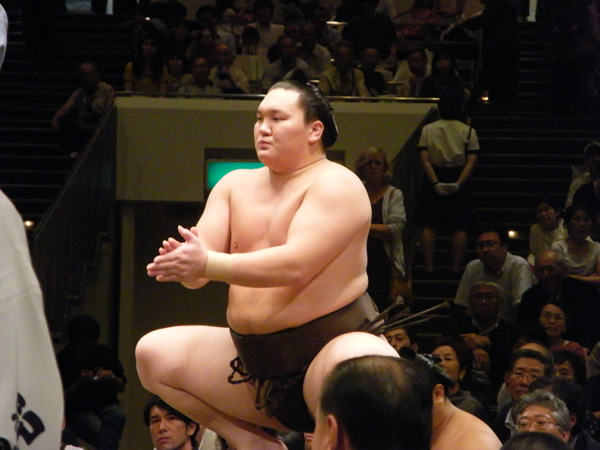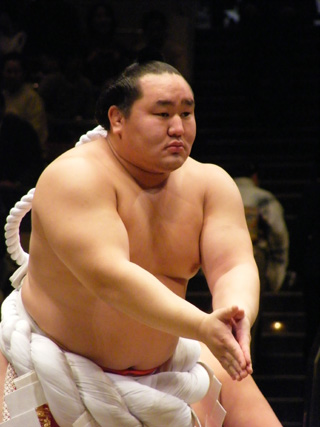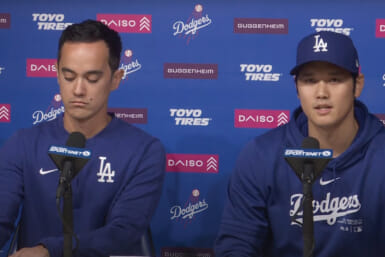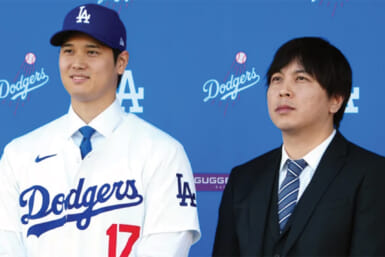by Chris Gould
Since Weekender was launched, Japan’s 1500-year-old national sport of sumo has undergone changes as vast as its participants’ girths. Back in 1970, no foreign sumotori had ever captured the top-division championship or ascended to the sport’s uppermost rank of yokozuna (grand champion). Indeed, at that time there was only one foreigner competing in sumo’s top division: Jesse Kuhaulua. However, the exploits of this husky-voiced 160-kilogram Hawaiian would transform sumo in ways deemed unthinkable by most of his generation.
The breakthrough came in July 1972 when Kuhaulua became the first non-Japanese to win one of the six annual tournaments and achieve sumo’s third-highest ranking of sekiwake. His new-found legendary status enabled him to coax several of his fellow countrymen into sumo, including two conspicuously large teenagers named Saleevaa Atisanoe and Chadwick Rowan. The former, popularly known as the 240-kilogram Konishiki, became sumo’s inaugural foreign ozeki (champion) in 1987, before later being denied promotion to yokozuna in controversial circumstances. The latter, 204 centimeters tall and eventually ballooning to 200 kilograms, became the first ‘gaijin yokozuna’ in January 1993 under the ring name of Akebono. Kuhaulua trained Akebono personally and described the moment as the proudest of his career. In May 2009, he retired as the only person born outside Japan to have managed his own sumo training stable.
The success of Konishiki and Akebono inspired a third Hawaiian, Fiamalu Penitani, to seek similar glories under the name of Musashimaru. After a decade of toil, he was crowned sumo’s second foreign grand champion in May 1999. Between 1992 and 2003, Akebono and ‘Maru’ collected 11 and 12 championships respectively, boosting the total number of Hawaiian tournament triumphs nine-fold. They also enjoyed an immense rivalry with the famous Hanada brothers, Waka and Taka, the first siblings to hold yokozuna status.
Having been radicalized by Pacific Islanders, sumo underwent another revolution after a six-year ban on incoming foreign wrestlers was relaxed in 1998. Scouts were dispatched to free-style wrestling events across the globe and came back with proven hungry fighters from Mongolia and Eastern Europe. In 2001, a certain 20-year-old Mongol named Asashoryu began to beat the sumo elite regularly, exhibiting new forms of agility and technical genius. Two years later, he was a yokozuna and intent on smashing every record in sight. 2005 was his finest year, as he became the first sumotori to secure each of the six 15-day tournaments and win 84 of his 90 matches. As of December 2009, he held 24 championships— the third highest total in history. In May 2007 he was joined on sumo’s loftiest perch by younger compatriot Hakuho, who has now raced to 12 championships in three years and set a new record for yearly wins: 86.
In November 2005, the cute-faced Bulgarian Kaloyan Mahlyanov— better known as Kotooshu—was installed as Europe’s first ozeki, and became Europe’s inaugural tournament winner in May 2008. The outstanding feats of Asashoryu, Hakuho, Kotooshu and up-and-coming Mongol Harumafuji have ensured that no Japanese has collected the top-division honors for a record 23 successive tournaments.
However, sumo since 1970 has not solely been defined by internationalization, and will still be largely remembered for the exploits of the Japanese. 1970 saw the retirement of Taiho, who still boasts the record for Emperor’s Cups won—32. The ensuing decade saw the sport ruled by 24-time-champion Kitanoumi, and the impeccably handsome rivals Wajima and Takanohana. The 1980s belonged to slender and muscular Chiyonofuji, who won 31 tournaments and remains the only man to register 1,000 career victories. The 1990s, of course, saw sumo gripped by Hanada-mania and feverish national excitement, which future Japanese sumotori must strive tirelessly to recreate.
External Link:
Asashōryū Akinori, Wikipedia










